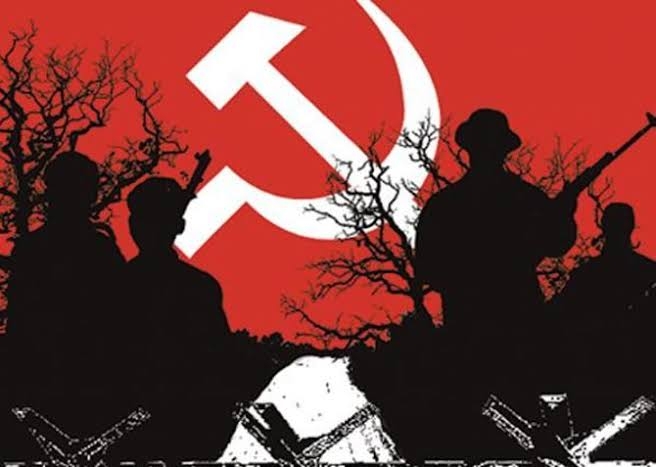Maoist Terrorism Continues Despite Hardline Measures
After all, the state has conducted rehabilitation programs for surrendered Maoists and has even tried to spur improvements of infrastructure and services in affected areas. By doing so, they help weaken the influence of the Maoists by eradicating the very socio-economic grievances which often form the backbone of their support base.

The most recent incident took place in the Narayanpur district of Chhattisgarh where two personnel of the Indo-Tibetan Border Police (ITBP) were injured on Friday as an improvised explosive device (IED) planted by Maoists exploded in the area. This attack is following a number of violence by Maoists and reinforcing the idea that this group works on a constant basis to destabilise the region.
In one case, a Maoist deployed an improvised explosive device (IED), in a tribal house in a village in Sukma district in Bastar, which resulted in serious injuries to two women. It means that these incidents cast Maoists as a constant menace for not only policemen and security forces but also the general population. Currently, Maoists placed IEDs throughout Bastar to harm security forces; however, innocent tribal people are the regular victims.
Security forces have come a long way in their fight against the Maoists. They have effectively cut the supply lines and created a major scarcity of the materials that are crucial to Maoist functions, especially the explosive cartridges. This has led to the Maoists to produce their own BGL and other weapons within the forested areas under their control. This flexibility demonstrated by the Maoists is their capacity to retain their effectiveness even when faced with adversity, as evidenced by their continued operation despite the loss of their strategic base.
The state government, led by Chief Minister Vishnu Deo Sai, has scaled up its operations against left-wing extremism. These all inclusive anti Naxal operations have caused a considerable dent to the Maoist structure, forcing them to go on the back foot. However, some of the Maoist factions have remained in the forest and are fighting the government forces using guerrilla warfare and killing innocent civilians to assert their dwindling authority.
The security forces have therefore resorted to the following strategies in countering the Maoists. This includes search operations, intelligence operations, and other activities that target local villagers in order to convince them to support the government’s side. Much emphasis has been placed on disrupting the Maoists’ supply chains, which are vital for their existence and activities
This report aims to discuss the consequences of the ongoing conflict on the local population. Maoists have placed IEDs randomly throughout Bastar to target security forces. But these deadly explosives have also killed innocent tribal residents and inflicted fear and disruption to the communities. The recent case in Sukma in which two women were injured by an IED is a painful reminder that the war affects ordinary people.
After all, the state has conducted rehabilitation programs for surrendered Maoists and has even tried to spur improvements of infrastructure and services in affected areas. By doing so, they help weaken the influence of the Maoists by eradicating the very socio-economic grievances which often form the backbone of their support base.
Though most of the Maoists have laid down their arms and joined government-sponsored rehabilitation programs, the residual active maoists continue to challenge the security forces. In a last ditch bid to create a perception of power, these residual elements are employing desperate measures, including improvised weapon manufacturing and sporadic attacks, to project strength and disrupt peace in the region.
The resilience of the Maoists is evident in their ability to adapt and continue their operations despite significant losses. Their strategy involves sporadic but impactful attacks, aimed at maintaining a presence and instilling fear among local populations and security forces. This ongoing conflict in Bastar is a testament to the resilience of both security forces and the Maoists.
Government and security forces are, in turn, also pursuing a long-term plan for its elimination of Maoist influence. It's a plan of sustained military pressure, along with development initiatives, and an attempt to bring the former Maoists into the mainstream society. It is not just a military defeat that is being attempted; rather, they are trying to stem the underlying causes that feed this insurgency.
The security forces' strategy has been to isolate the Maoists from their support base by targeting their supply lines and leadership. High-profile neutralizations, such as those of Nagesh Padam and Manila Punem, are part of this strategy. By removing key leaders, the security forces aim to disrupt the organisational structure of the Maoists and weaken their operational capabilities.
The ongoing conflict in Bastar highlights the complex and protracted nature of the struggle between security forces and Maoists. Despite significant successes in disrupting Maoist operations and neutralising key leaders, the Maoists continue to pose a significant threat. Their ability to adapt and persist in the face of sustained pressure underscores the challenges in achieving lasting peace and stability in the region.
The question remains whether the Maoists will eventually be defeated through continued military and developmental efforts, or whether they will continue to resist and adapt, necessitating even more stringent measures. The state's strategy of combining force with socio-economic initiatives offers a comprehensive approach, but the road to peace is likely to be long and arduous.
As the government intensifies its campaign and local communities become more resilient, there is hope that the cycle of violence can be broken. However, the Maoists’ capacity for adaptation and their continued ability to inflict harm on both security forces and civilians mean that a definitive end to the conflict remains uncertain.


